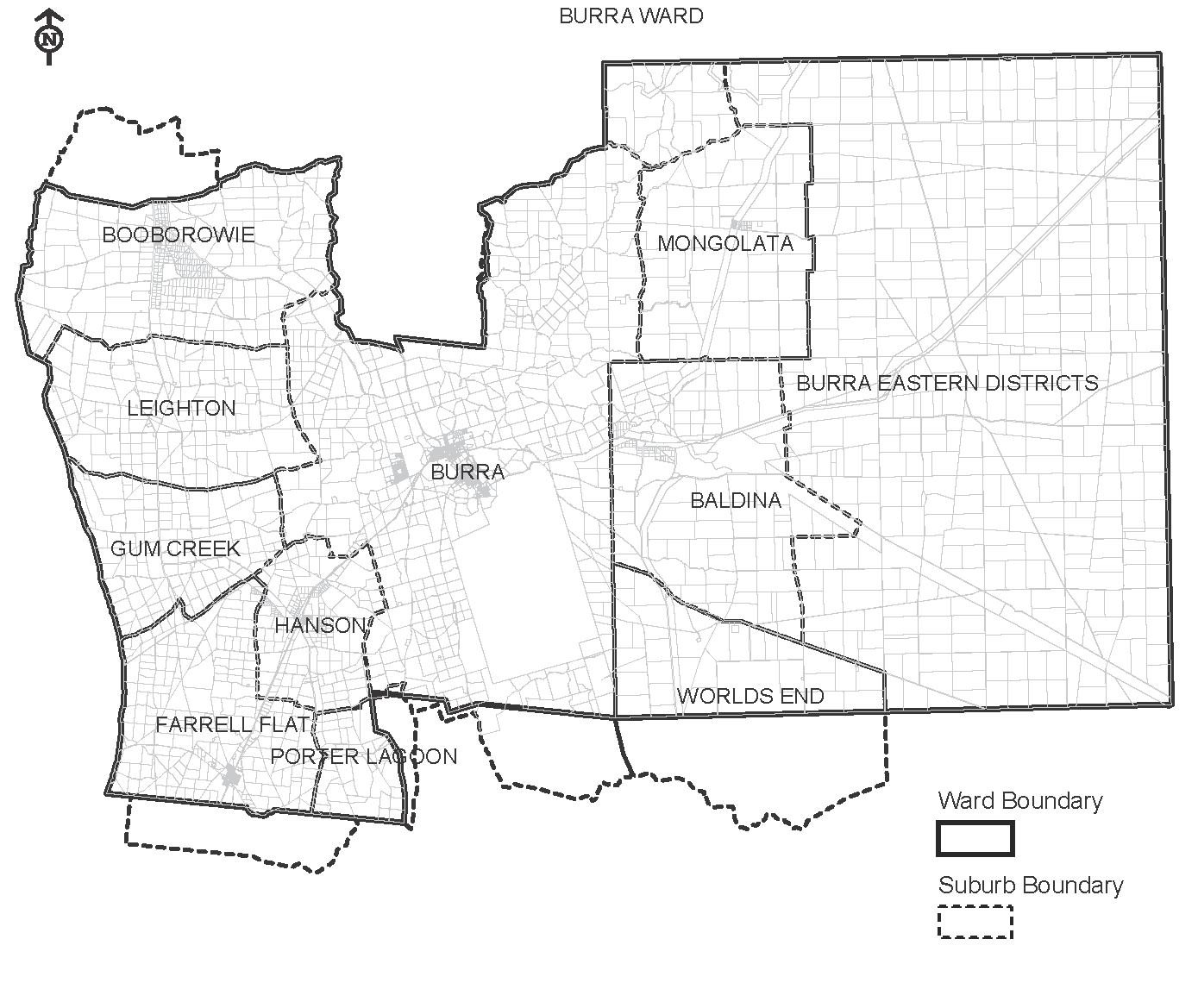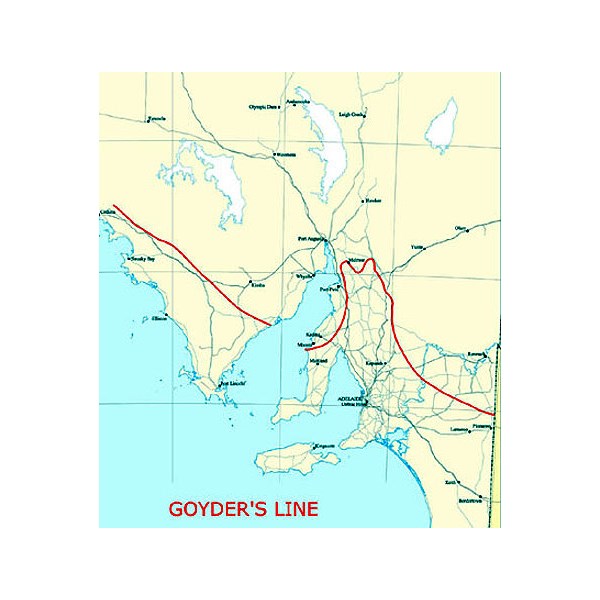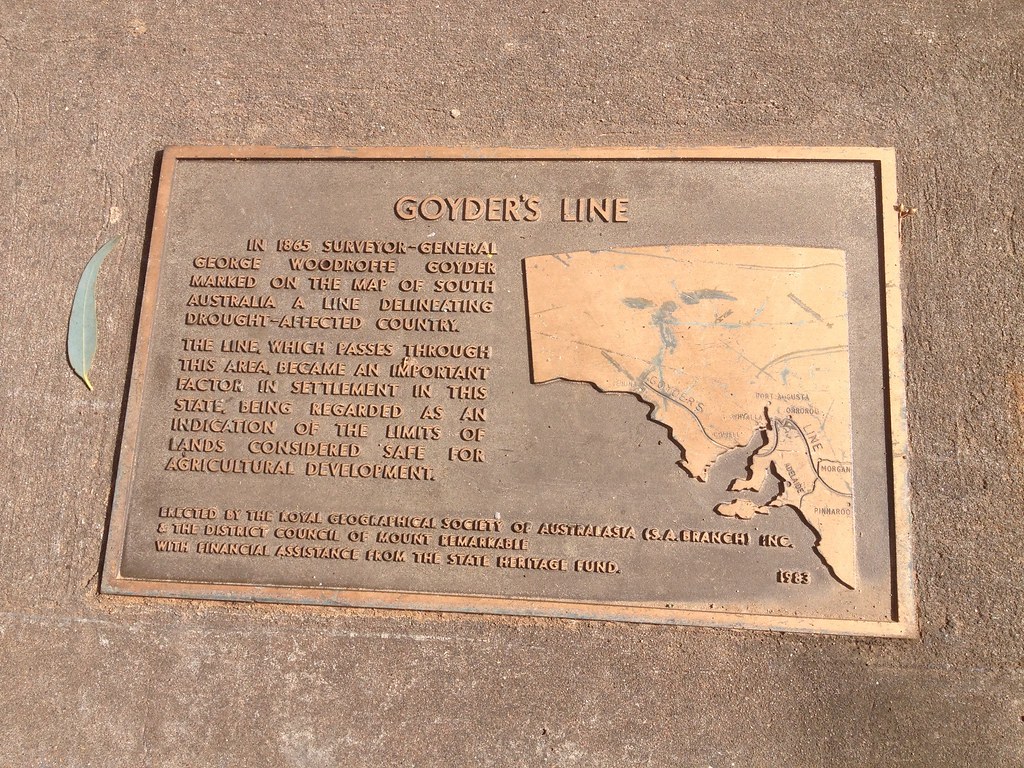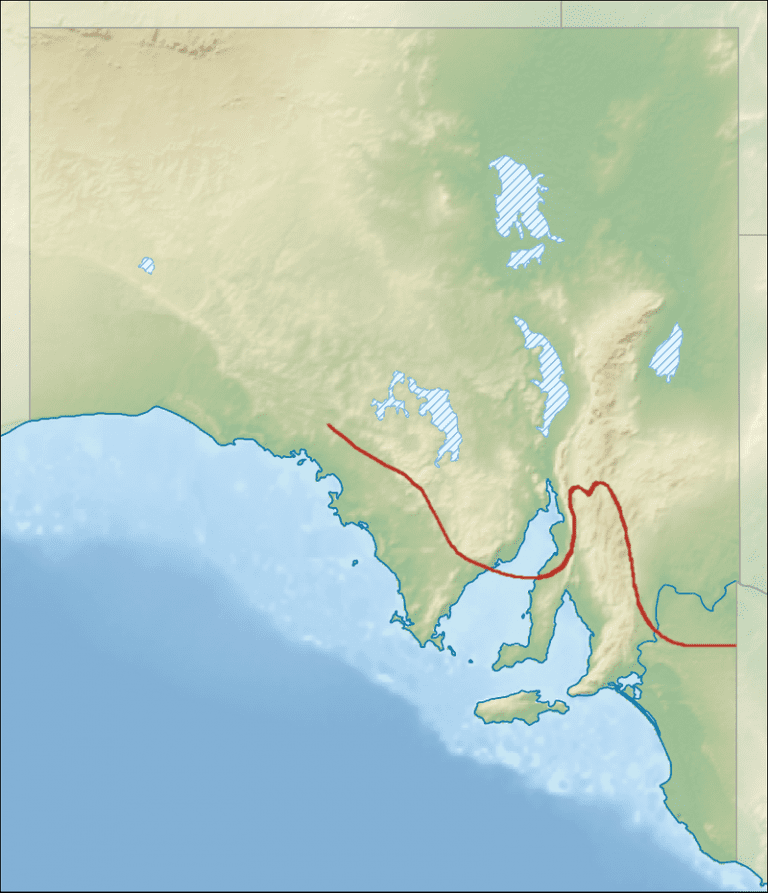Life on the Line Farming against the odds and Goyder's timeless advice ABC News
SA : 1843 - 1904. 2nd April 1927. GOYDER'S LINE OF RAINFALL. How a Famous Boundary Was Delineated. FOLLOWING THE SALTBUSH ACROSS SOUTH AUSTRALIAA harassed Commissioner of Crown Lands asked Goyder following the great drought of 1865, to make the necessary examination of the country lying to the north of Adelaide to enable him to determine and lay down on the map, as nearly as practicable.

Monument with map of Goyder's Line drawn by Flickr
Goyder made an extended tour of the mid-north to map the extent of a fierce drought. As he painstakingly traversed the landscape on horseback, he made a shrewd and, it would later emerge, remarkably accurate assessment of the limits of reliable rainfall.. Goyder's Line, from On the Margins of the Good Earth, by D.W. Meinig (Rand.

Pin on Maps of Australia / Australasia
Goyders Line This line is where the pastoral and farming lands meet. Mapped in 1865 by the Surveyor General—George Woodroffe Goyder. Take the opportunity to observe the difference in vegetation.
Goyder's handdrawn map State Library of South Australia
1920-29 Map of South Australia showing Pastoral Stations and an accurate Goyders Line by H E C Robinson Ltd 2nd April 1927 GOYDER'S LINE OF RAINFALL How a Famous Boundary Was Delineated FOLLOWING THE SALTBUSH ACROSS SOUTH AUSTRALIA

Location of Goyder's Line (Meinig, 1961), the 220 mm growing season... Download Scientific Diagram
The Goyder Line is a line of reliable rainfall in South Australia. It separates land suitable for crops from general grazing land. It originated when the then Surveyor-General of South Australia, George Goyder, evaluated pastoral properties in the north of the State after a period of severe drought.

Council Goyder Regional Council
Goyder's Line is a line that runs roughly east-west across South Australia and, in effect, joins places with an average annual rainfall of 10 inches (250 mm). North of Goyder's Line, annual rainfall is usually too low to support cropping, with the land being only suitable for grazing.Related to that, the line also marks a distinct change in vegetation.
Goyder's Line moving south with climate change, SA scientists say, forcing farming changes ABC
Goyder's Line stretches across maps of South Australia from Ceduna in the west, across to Spencer Gulf, north to Orroroo, then south and east across to the Victorian border at Pinnaroo. Climate scientist with Primary Industries SA Peter Hayman said farmers living close to the line had good reason to be worried.
Why is the westernmost point of Darwin called East Point? ABC News
Goyder's Line marks the delineation between land in South Australia which receives more than 30 centimetres of rain annually and that which does not. In late 1865, South Australia's surveyor-general, George W. Goyder, was asked to survey the state's north and define the southern extremity of the great drought of 1864-65.

Sunday History Photo / Person ExplorOz Forum
In 1865 Surveyor-General George Woodroffe Goyder marked on the map of South Australia a line delineating drought - affected country. The line, which passes through this area, became an important factor in settlement in this State, being regarded as an indication of the limits of lands considered safe for agricultural development.

Goyder Line Australian food history timeline
From east to west, 'Goyder's Line of Rainfall' ran approximately from the Hundred of Pinnaroo, swung northwest to the Hundred of Commooroo and the Melrose area, southwest through Yorke Peninsula to the Hundred of Wallaroo, then northwest across Eyre Peninsula from the Hundred of Hawker to south of Darke's Peak, and across to the Hundred of Chilu.

Goyder's Line
Pastoralists demanded rent relief, and George Goyder - SA Surveyor-General from 1861 to 1894 - was sent north "to lay down on a map, the line of demarcation between that portion of the country where the rainfall has extended, and that where the drought prevails". The result was his line of "reliable rainfall".

Goyder's Line in relation to 0.26 precipitationevaporation (PE) ratio... Download Scientific
The line Goyder drew is a rule of thumb for land use. Land south of the line is generally suitable for growing crops. Land above the line is generally suitable for grazing - not crops. Line of rainfall. Now we know that the ranges push the 25cm (10 inch) annual rainfall line (isohyet) far into areas where rainfall is often less than half that.

Study area depicting Goyder's Line, 10 km buffers on either side of the... Download Scientific
Goyder's Line marks out the limits of 'reliable rainfall' and separates agricultural country south of the line from drier pastoral country to the north. Ian's farm is above the line, just outside.

Goyder's line map Goyder's line monument near Melrose, Sou… Flickr
In 1865, after years of drought, Goyder was sent north to map the actual line of demarcation between arable and drought stricken land. 'Goyder's line of rainfall' followed the southern boundary of vast areas of saltbush country in the far north of South Australia. The line was soon generally accepted as an accurate guide to the separation.

Harvest windfall for lentil burghers of South Australia Grain Central
In 1865 Surveyor-General George Woodroffe Goyder marked on the map of South Australia a line delineating drought - affected country. The line, which passes through this area, became an important factor in settlement in this State, being regarded as an indication of the limits of lands considered safe for agricultural development.

Location of Goyder's Line (Meinig, 1961), the 220 mm growing season... Download Scientific Diagram
Location Detail of memorial cairn near Redhill, South Australia, showing a map of Goyder's Line within the southern portion of South Australia Goyder's Line starts on the west coast near Ceduna and runs south-east across the Eyre Peninsula to strike Spencer Gulf near Arno Bay.